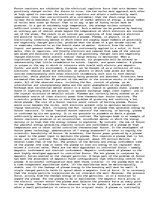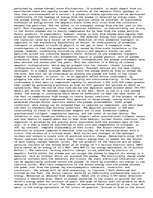Fusion reactions are inhibited by the electrical repulsive force that acts between two positively charged nuclei. For fusion to occur, the two nuclei must approach each other at high speed to overcome the electrical repulsion and attain a sufficiently small separation (less than one-trillionth of a centimeter) that the short-range strong nuclear force dominates. For the production of useful amounts of energy, a large number of nuclei must under go fusion: that is to say, a gas of fusing nuclei must be produced. In a gas at extremely high temperature, the average nucleus contains sufficient kinetic energy to undergo fusion. Such a medium can be produced by heating an ordinary gas of neutral atoms beyond the temperature at which electrons are knocked out of the atoms. The result is an ionized gas consisting of free negative electrons and positive nuclei. This gas constitutes a plasma. Plasma, in physics, is an electrically conducting medium in which there are roughly equal numbers of positively and negatively charged particles, produced when the atoms in a gas become ionized. It is sometimes referred to as the fourth state of matter, distinct from the solid, liquid, and gaseous states. …




